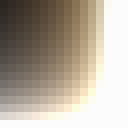I need some tips on lighting up an area. Basically I am building a mob trap under the ground, and I want to light up the surface so nothing will spawn there.
I have considered building this elsewhere (on an ocean) but I want to try this underground.
Lighting up the caves will be the next chalange. I have already dough trough the last 20 levels and collected large amounts of resources doing so and placing random touches along the way. This week I want to focus on the surface.
--
--
So the surface I want to light up is 256 x 256 blocks. I have removed all the trees and filled up all the deep holes. There are still some uneven parts that i want to leave in place if it is possible.
Correct me if I am wrong here, I have just been playing this:
Ok I guess if this was a flat surface I would put a torch every 13th block right?? I place a torch, count 12 blocks, and place one on the next block, and so on. Now some area's are 2-6 blocks higher or lower, do the same rules still apply??? Some area's are a little higher, and just at the end is a mountain of about 15 blocks. How would I light up that.
Secondly, I actually want to use glowstone instead of torches. Do the same rules apply there?



